 |
Foodoric and associated companies are chemicals manufacturing companies operated in India USA UAE Europe Asia and other countries around the world. The associates have one or more of certifications like ISO-9001, ISO-14001, ISO-22000:2005, FSSC 22000; OHSAS 18001; Kosher and Halal Certified; HACCP, FSSAI and FDA - GMP approval. Buyers are assured of good quality and CIF wholesale and retail price for supplies of our Sodium Acetate Anhydrous Trihydrate. |

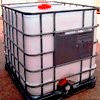
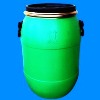
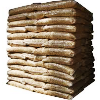
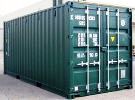

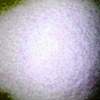
Sodium Acetate Anhydrous Trihydrate USP BP ACS Reagent FCC Food Grade Manufacturers Suppliers
Sodium Acetate
Anhydrous Trihydrate USP BP ACS Reagent FCC Food Grade

Sodium Acetate Anhydrous Trihydrate CAS Number: 6131-90-4 & 127-09-3, Molecular Formula: yy, Molecular Weight: yy
| SPECIFICATIONS OF SODIUM ACETATE TRIHYDRATE PURE | |
| Assay | 99% Sodium Acetate Trihydrate minimum |
| Appearance | White Transparent Crystalline |
| Test Solution | A 10% Solution is clear & colourless |
| pH | 7.5-9 |
| Arsenic | Less than 1 ppm |
| Calcium & Magnesium | Less than 50 ppm |
| Heavy Metals | Less than 1 ppm |
| Iron | Less than 5ppm |
| Chlorides | Less than 0.03% |
| Sulphates | Less than 0.02% |
| Packing | As required |
| SPECIFICATIONS OF SODIUM ACETATE ANHYDROUS PURE | |
| Purity | 99 % minimum purity as CH3COONa |
| Appearance | Snow-White Powder |
| Clarity of 10% Solution | A 10% Solution w/v is clear and colourless |
| pH (10% in water) | pH between 7.5-9 |
| Arsenic | Arsenic < 1ppm. |
| Calcium and Magnesium | To pass the test 50 ppm |
| Heavy Metals | Heavy Metals < 1ppm |
| Iron | Iron < 5ppm |
| Chloride | Chloride < 100ppm |
| Sulphate < 225ppm | Sulphate < 20ppm |
| Packing | 25kg(55 lbs)-50kg bags or pellets or as required |
| SODIUM ACETATE IP GRADE | |
| Dry Basis Assay | 99 to 101% |
| Characteristics | Colourless Crystals |
| Solubility | Soluble in 0.8 part of water and in 19 parts of Ethanol (96%) |
| Clarity and colour of 10% w/v solution | Clear and Colourless |
| Alkalinity (pH of 5% solution) | 7.5-9.0 |
| Arsenic | 2 ppm |
| Calcium and Magnesium (calculated as Ca) | 50 ppm |
| Heavy Metals as Lead | 10 ppm |
| Iron | 10 ppm |
| Chloride | 200 ppm |
| Sulphate | 200 ppm |
| Reducing Substances | Passes test |
| Packing | In 50 Kg HDPE bag with HMHDPE liner |
Sodium Acetate FCC Food Grade Specifications
C2H3NaO2 Formula wt, anhydrous 82.03
C2H3NaO2·3H2O Formula weight, trihydrate 136.08
DESCRIPTION
Sodium Acetate occurs as colorless, transparent crystals or as a granular, crystalline or white powder. The anhydrous form is hygroscopic; the trihydrate effloresces in warm, dry air. One gram of the anhydrous form dissolves in about 2 mL of water; 1 g of the trihydrate dissolves in about 0.8 mL of water and in about 19 mL of alcohol.
Function: Buffer.
REQUIREMENTS
Identification: A 1:20 aqueous solution gives positive tests for Sodium and for Acetate.
Assay: Not less than 99.0% and not more than 101.0% of C2H3NaO2 after drying.
Alkalinity Anhydrous: Not more than 0.2%; Trihydrate: Not more than 0.05%.
Lead: Not more than 2 mg/kg.
Loss on Drying: Anhydrous: Not more than 1.0%; Trihydrate: Between 36.0% and 41.0%.
Potassium Compounds: Passes test.
Sodium Acetate USP Specifications
Sodium Acetate USP
C2H3NaO2-3H2O 136.08
Assay: Sodium Acetate contains three molecules of water of hydration, or is anhydrous. It contains not less than 99.0 percent and not more than 101.0 percent of C2H3NaO2, calculated on the dried basis.
Identification: A solution responds to the test for Sodium and for Acetate.
pH: between 7.5 and 9.2, in a solution in carbon dioxide-free water containing the equivalent of 30 mg of anhydrous sodium acetate per mL.
Loss on drying: Dry at 120 to constant weight: the hydrous form loses between 38.0% and 41.0% of its weight, and the anhydrous form loses not more than 1.0% of its weight.
Insoluble matter: Dissolve the equivalent of 20 g of anhydrous sodium acetate in 150 mL of water, heat to boiling, and digest in a covered beaker on a steam bath for 1 hour. Filter through a tarred filtering crucible, wash thoroughly, and dry at 105 : the weight of the residue does not exceed 10 mg (0.05%).
Chloride: A portion equivalent to 1.0 g of anhydrous sodium acetate shows no more chloride than corresponds to 0.50 mL of 0.020 N hydrochloric acid (0.035%).
Sulfate: A portion equivalent to 10 g of anhydrous sodium acetate shows no more sulfate than corresponds to 0.50 mL of 0.020 N sulfuric acid (0.005%).
Calcium and magnesium: To 20 mL of a solution containing the equivalent of 10 mg of anhydrous sodium acetate per mL add 2 mL each of 6 N ammonium hydroxide, ammonium oxalate TS, and dibasic sodium phosphate TS: no turbidity is produced within 5 minutes.
Potassium: Dissolve the equivalent of 3 g of anhydrous sodium acetate in 5 mL of water, add 1N acetic acid drop wise until the solution is slightly acidic, and then add 5 drops of sodium cobalt nitrite TS: no precipitate is formed.
Aluminum: (where it is labeled as intended for use in hem dialysis): the limit is 0.2µ =g per g.
Heavy metals: the limit is 0.001%.
Organic volatile impurities: meets the requirements.
Sodium Acetate Trihydrate BP Ph Eur Specifications
C2H3NaO2,3H2O
DEFINITION
Sodium ethanoate trihydrate.
Content: 99.0 per cent to 101.0 per cent (dried substance).
CHARACTERS
Appearance: Colourless crystals.
Solubility: Very soluble in water, soluble in ethanol (96 per cent).
IDENTIFICATION
A. 1 ml of solution S (see Tests) gives reaction (b) of acetates.
B. 1 ml of solution S gives reaction (a) of sodium.
C. Loss on drying (As shown in the Relevant Test).
TESTS
Solution S: Dissolve 10.0 g in carbon dioxide-free water prepared from distilled water R and dilute to 100 ml 100 ml with the same solvent.
Appearance of solution: Solution S is clear and colourless.
pH: 7.5 to 9.0.
Dilute 5 ml of solution S to 10 ml with carbon dioxide-free water.
Reducing substances: Dissolve 5.0 g in 50 ml of water, then add 5 ml of dilute sulphuric acid and 0.5 ml of 0.002 M potassium permanganate. The pink colour persists for at least 1 h. Prepare a blank in the same manner but without the substance to be examined.
Chlorides: Maximum 200 ppm.
Sulphates: Maximum 200 ppm.
Aluminium: Maximum 0.2 ppm, if intended for use in the manufacture of dialysis solutions.
Arsenic: Maximum 2 ppm, determined on 0.5 g.
Calcium and magnesium: Maximum 50 ppm, calculated as Ca.
Heavy metals: Maximum 10 ppm.
Iron: Maximum 10 ppm, determined on 10 ml of solution S.
Loss on drying: 39.0 per cent to 40.5 per cent, determined on 1.000 g by drying in an oven at 130C.
Sodium Acetate Anhydrous ACS Analytical Reagent Specifications
CH3COONa
Formula Weight 82.03
CAS Number 127-09-3
REQUIREMENTS
Assay: 99.0% C2H3O2Na
pH of a 5% solution: 7.0-9.2 at 25C
MAXIMUM ALLOWABLE
Insoluble matter: 0.01%
Loss on drying at 120C: 1.0%
Chloride (Cl): 0.002%
Phosphate (PO4): 0.001%
Sulfate (SO4): 0.003%
Calcium (Ca): 0.005%
Magnesium (Mg): 0.002%
Heavy metals (as Pb): 0.001%
Iron (Fe): 0.001%
Sodium Acetate Trihydrate ACS Analytical Reagent Specifications
NaC2H3O2 . 3H2O
Formula Wt 136.08
CAS Number 6131-90-4
REQUIREMENTS
Assay: 99.0-101% NaC2H3O2 . 3H2O
pH of a 5% solution: 7.5-9.2 at 25C
Substances reducing permanganate: Passes test
MAXIMUM ALLOWABLE
Insoluble matter: 0.005%
Chloride (Cl): 0.001%
Phosphate (PO4): 5 ppm
Sulfate (SO4): 0.002%
Heavy metals (as Pb): 5 ppm
Iron (Fe): 5 ppm
Calcium (Ca): 0.005%
Magnesium (Mg): 0.002%
Potassium (K): 0.005%

Sodium Acetate Anhydrous Trihydrate Manufacturers Suppliers:
Foodoric Group of Cos
India, USA, UAE, Europe
e-mail: info@foodoric.com

Copyright
Last
14 March, 2022
Sodium Acetate Anhydrous Trihydrate Suppliers, Exporters, Importers, Manufacturers offering good CIF wholesale and retail prices, quality and online information.
A jackal woke up early in the morning and went in to the plains. He looked at his long shadow in the rising morning sun and said to himself, "I must have a camel for my meal today".
He kept moving around till noon and it was getting hot and the jackal was tired. He was also hungry and thirsty. He looked at his small shadow in the mid-day sun. He murmered, "I was only joking about the camel, a mouse will do".